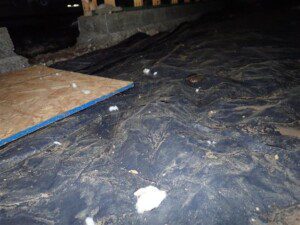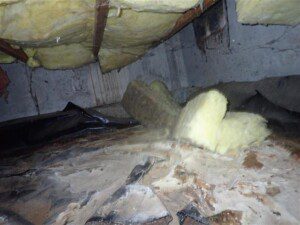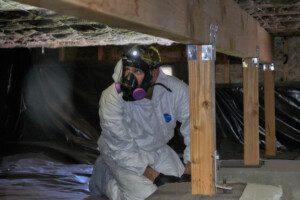
To explore these questions, consider the structure of wood. Some plants, trees and shrubs, produce resistant tissue over seasons and years of growth. This allows the towering grandeur of sequoias and the spreading crowns of bigleaf maple. Wood is made of long water conducting cells or compartments attached end to end to form tiny tubes. These tubes conduct water from the roots up to the branches and leaves of the plant. The individual cells are dead at maturity in the plant, and the cell walls are made of fairly rigid cellulose, so woody tissue doesn’t change much when it’s separated from the plant. As water evaporates out of the cut ends of the tubes, the tubes and the whole mass of wood shrinks.
This drying process is important to the usefulness of wood. As wood dries, the cells and tissue become hard and stiff. Wood can be cut into strong, durable shapes that can be assembled into framing and sheathing materials of homes. Dry wood is also resistant to fungi and insects that break it down.
A wide variety of fungi break down wood when it is moist. Fungi grow by producing narrow strings of cells called hyphae. These hyphae release chemicals that break down the cellulose cell walls of the wood. The hyphae then absorb the digested wood and use it as an energy source and materials to build more cells. This absorption process requires a high level of moisture in the wood. As hyphae grow through the wood, cells of wood are replaced by the strands of fungal hyphae. As these hyphae clump together into a mass called mycelium, nutrients and moisture are moved throughout the hyphae, helping spread the moist growing conditions through the absorbent wood.
While this fungal growth or wood rot is commonly misnomered “dry rot” when it occurs in wood of structures, the actual growth and damage only occur in wood that is moist enough. Typically, moisture will intrude during heavy rain. Since spores of wood rotting fungi are everywhere, some will sprout, and the strands of hyphae will take advantage of the moist wood to grow through and destroy the wood, often for long periods after the moistening. When the wood has dried out, the fungal hyphae are no longer actively growing, but the dry spongy growth has replaced the original hard wood. This damage often lurks underneath more resistant wood or thick paint layers.
Fresh wood from trees normally contains enough moisture to allow fungal growth and many types of fungi infest and grow through wood. Lumber used in homes normally dries down to less than 20% moisture content at construction. It will continue drying, dependent on ambient humidity, and will reach an equilibrium generally below 14%. Wood will readily absorb moisture by direct contact, so homes are designed with ground clearance for wood features. The long open tubes of wood tissue also absorb moisture from the humidity in the air. Moisture escapes the ground as water vapor, and living spaces during much of the year leak heat into the crawlspace and attic, raising the humidity of those spaces.

Inadequate insulation and loose construction can allow large losses of heat and humidity to the attic and crawlspace. Inadequate ventilation can trap the excess humidity. This allow wood and any other cellulose containing material, like paper, straw, cardboard, to absorb the moisture. At 14% moisture content, wood is vulnerable to surface mold fungi. If wood absorbs enough moisture to 20% moisture content or more, it is vulnerable to wood rot fungal growth.
Fungi aren’t the only threat to damp wood. Termites, ants and beetles invade wood when it gains enough moisture. Natural processors of woody debris, they don’t discriminate between forest stumps and framing timbers. Infestations of a home are often linked to moisture intrusion of exterior wood and crawlspaces. Insect infestations can work in harmony with fungal rot to destroy the structural integrity of a home, often with little indication.
Commonly, some amount of debris falls into the crawlspace during home construction. In many cases, the vapor barrier is installed early on, and sawdust and other debris falls directly on it. During flooring and other remodel work as well, debris is often created below the floors. All wood and cellulose containing debris should be removed promptly. Since vapor barriers often leave some earth exposed and homes in many cases are built on areas with high groundwater, water vapor and even liquid water at times, will intrude the crawlspace. The longer cellulose debris remains, the more it contributes to humidity, the risk of mold, rot fungi and insect infestation.

